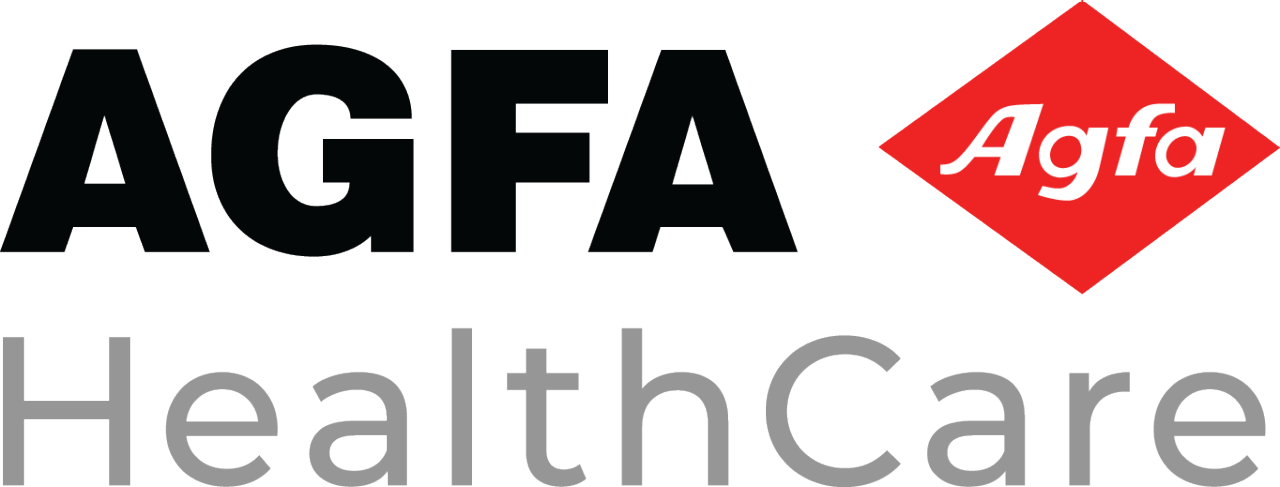Auto logout in seconds.
Continue LogoutImaging utilization is projected to grow 8.8% by 2034. At the same time, current clinician shortages widen the gap between diagnostic demand and workforce capacity. To keep pace, health systems must find ways to operate more efficiently. One way is by investing in scalable, cloud-based enterprise imaging platforms that allow healthcare leaders to balance workloads across their organization and scale with agility and security.
Advisory Board researchers recently spoke to Charles Morris, Director of Enterprise Imaging Strategic Marketing at AGFA HealthCare. The company provides imaging IT solutions used by health systems worldwide. In this Q&A, Morris shares insights on how enterprise imaging is evolving to meet the demands of modern healthcare, and what leaders should consider as they respond to capacity limitations and aim to strengthen systemness, interoperability, and clinical efficiency.
What challenges do health systems face in managing an increasing volume of imaging data across an increasing number of sites?
A large wave of aging baby boomers is entering a stage of life that requires more advanced healthcare. New modalities, precision medicine, and more personalized care are fueling new demand. This is driving up patient volumes and the complexity of reading. Simultaneously, many radiologists from that same generation are retiring or requiring a better work-life balance, creating a growing imbalance — more patients and procedures, but fewer radiologists, cardiologists, and clinicians to manage the demand.
Older imaging technologies exacerbate this strain. Traditional picture archiving and communication systems (PACS) were built for local use and tied to specific hospitals or specialties. As a result, many don’t scale well. Organizations that still operate with these siloed systems can’t share workloads efficiently. For instance, one facility might be overwhelmed while another has capacity, but redistributing that work isn’t possible without enterprise-level imaging systems. Organizations are now seeking solutions that support broader labor distribution and smarter use of specialized expertise.
How does modern enterprise imaging help health systems work more cohesively?
The goal of enterprise imaging is to make imaging data accessible and routine. It supports vast geographic networks of facilities and extends across partner organizations to reflect the way care is delivered today. Enterprise imaging captures a shared record of a patient’s images over time, like radiology, cardiology, visible light photos, and more. It connects images from across departments into one unified system, instead of keeping them in separate archives.
At AGFA HealthCare, we view enterprise imaging as a converged, web-native platform that’s more akin to an EHR than a traditional PACS. Its unified structure reduces complexity and allows clinicians and staff to operate with greater consistency, confidence, and efficiency across the enterprise.
Adoption varies by organization. Some CIOs lead enterprise strategies, while others move forward based on clinical need. But across the board, we’ve found that organizations with strong executive alignment around convergence, consistency, and scale are better positioned to realize the full value of enterprise imaging.
How does enterprise imaging help clinicians work more efficiently?
Enterprise imaging allows radiologists to rapidly access imaging data. Traditionally, PACS worklists only showed studies that were ready for review at a specific location. If a radiologist needed a prior exam stored elsewhere, that data often had to be manually transferred, a time-consuming step that breaks clinical flow and adds frustration. Modern platforms like AGFA HealthCare’s allow clinicians to access any study across the network on demand, including larger files such as CT or 3D mammogram scans. There’s no need to move files around or load them ahead of time. You just click, and the image opens clearly, so you can read it with full confidence.
In organizations without enterprise imaging, clinicians often navigate separate systems to find imaging by specialty. A converged platform eliminates this barrier by embedding all imaging access directly into the EHR, helping clinicians stay in the flow of care rather than being pulled into fragmented tools.
What is the role of vendor-neutral archives (VNAs) and universal viewers (UV) in managing imaging data?
VNAs were originally developed to offset the limitations of traditional PACS systems. Today, VNAs play a broader role in enterprise imaging, often integrated directly into platforms — similar to how lab or pharmacy modules are embedded into EHRs. This integration allows organizations to modernize at their own pace, connecting legacy PACS systems, preserving existing investments, and supporting phased migrations.
UVs are also essential. They support clinicians who need to review images without advanced diagnostic tools, as well as specialists who require more robust functionality. Many legacy PACS vendors added web viewers as a workaround, but these often fall short in effective usability.
At AGFA HealthCare, our platform was built from the ground up with streaming speed, browser-based access, and deep EHR integration in mind. For example, clinicians can filter studies by keyword (e.g., “hand”) and see the timeline — all without leaving the patient record. The embedded VNA and UV support both diagnostic and clinical use, helping reduce the number of systems clinicians need to navigate.
Looking ahead, what trends or innovations in enterprise imaging are shaping the use of this technology?
SaaS adoption is accelerating. Last year, about 65% of AGFA’s new contracts in the United States were cloud-based; this year, it will be over 85%. That shift is happening because as enterprise platforms grow in complexity and scope, more organizations prefer not to manage them internally. Cloud offers operational agility, scalability, security, and consistent performance with fewer local demands on IT. This way, healthcare leaders have more peace of mind and the time to focus on the enterprise and clinical transformation.
Percentage of AGFA’s new contracts in the United States that are cloud-based
Another major shift is toward network radiology where health systems are partnering with radiology groups and community sites across geographic regions. Rather than relying on manual image exchange, imaging health networks allow real-time collaboration and data sharing across institutional boundaries. That improves service quality and speed without adding friction for the care team.
Why are health systems moving away from decentralized imaging IT decisions and toward a standardized enterprise platform approach?
In the past, individual physicians across different sites often influenced technology decisions, which created inconsistency and inevitable cost and complexity across health systems. But as financial and operational pressures grow along the cybersecurity thread, organizations are shifting to more centralized approaches that emphasize scale and standardization. The challenge for executives and physicians is letting go of familiar tools in favor of unified platforms that help the entire health organization versus just one group or another.
While early enterprise imaging tools couldn’t match best-of-breed software in some specialties, that gap has closed. Today, converged enterprise imaging platforms deliver clinical performance that rivals specialty software platforms. Preferences will always vary. But systems that reduce the number of tools IT teams need to manage and streamline user experience into a tailored workspace tend to perform better over time for administrators and clinical users.
How can health systems deliver a consistent experience across facilities to support systemness?
The idea of systemness is critical. Physicians should have a consistent experience across facilities, much like a seamless theme park visit where the same pass works everywhere. When systems are unified, clinicians can move between sites without adjusting to different logins, tools, or workflows whether they’re at a main campus or remote clinic. Systemness enables flexibility, speeds up onboarding, and encourages referring providers to use system resources more effectively. With enterprise imaging, a radiologist reading from home sees the same interface and functionality that they would at the hospital. That kind of continuity helps reduce burnout, improve collaboration, and deliver more consistent care across the network.
AGFA HealthCare is redefining diagnostic imaging with a connected, intelligent, and adaptive ecosystem that puts clinical excellence and user experience at the center - supporting how clinicians work today, while scaling for tomorrow. Our Enterprise Imaging platform combines cloud-native architecture, AI-powered workflows, and blazing-fast streaming to deliver seamless access and precision across radiology, cardiology, mammography, POCUS, and more.
Built for clinical and IT harmony, AGFA Enterprise Imaging fits naturally into your workflow, keeping users focused, efficient, and confident—no matter where or how they work. From intelligent worklist orchestration to intuitive reporting, everything just works—so your team can focus on what matters most: delivering excellent care.
That’s life in flow.
Learn more about AGFA HealthCare
This article is sponsored by AGFA HealthCare, an Advisory Board member organization. Representatives of AGFA HealthCare helped select the topics and issues addressed. Advisory Board experts wrote the content, maintained final editorial approval, and conducted the underlying research independently and objectively. Advisory Board does not endorse any company, organization, product or brand mentioned herein.
To learn more, view our editorial guidelines.

This article is sponsored by AGFA HealthCare. Advisory Board experts conducted the research and maintained final editorial approval.
Don't miss out on the latest Advisory Board insights
Create your free account to access 1 resource, including the latest research and webinars.
Want access without creating an account?
You have 1 free members-only resource remaining this month.
1 free members-only resources remaining
1 free members-only resources remaining
You've reached your limit of free insights
Become a member to access all of Advisory Board's resources, events, and experts
Never miss out on the latest innovative health care content tailored to you.
Benefits include:
You've reached your limit of free insights
Become a member to access all of Advisory Board's resources, events, and experts
Never miss out on the latest innovative health care content tailored to you.
Benefits include:
This content is available through your Curated Research partnership with Advisory Board. Click on ‘view this resource’ to read the full piece
Email ask@advisory.com to learn more
Click on ‘Become a Member’ to learn about the benefits of a Full-Access partnership with Advisory Board
Never miss out on the latest innovative health care content tailored to you.
Benefits Include:
This is for members only. Learn more.
Click on ‘Become a Member’ to learn about the benefits of a Full-Access partnership with Advisory Board
Never miss out on the latest innovative health care content tailored to you.

